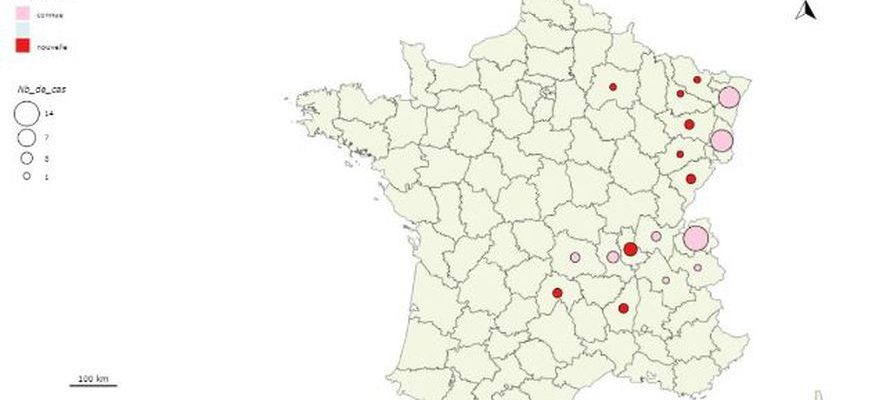Tick-borne encephalitis is gaining ground in Europe, and, in France: 71 cases have been reported since 2021, with an expansion of the affected areas, according to a first report published this Friday, July 7 by Public Health France (SpF).
Faced with the increase in the incidence of the disease in Europe and the extension of the area and period of circulation of the virus, infections by the tick-borne encephalitis virus have been listed, since May 2021, on the list of notifiable diseases.
Who is mainly affected?
From May 2021 to May 2023, 71 cases were notified (30 in 2021, 36 in 2022, 5 in 2023), indicates the health agency. The majority were male, the median age was 48. But four children, two of whom were under 10, and five seniors over 65 – age being an increased severity factor – were affected.
Some of the cases listed (15%) exercised professions that exposed them particularly, in particular in the breeding of horses/ruminants or in the forests.
What are the symptoms ?
After an incubation of one to two weeks, following a bite, the disease begins suddenly with fever, headache and chills. If the disease has “very low lethality”, it causes, in symptomatic cases, “significant sequelae following damage to the central nervous system”, noted Alexandra Mailles, of SpF, during a press conference. Tick-borne encephalitis is an infection that affects the brain and spinal cord in a significant proportion of cases, and 40% of these cases can present neurological sequelae for several years, notes Spf.
All ages combined, 26 (37%) presented with meningitis, 27 (38%) with encephalitis, 9 cases (13%) with meningoencephalitis and 2 cases (3%) with encephalomyelitis. Seven cases (10%) showed no neurological signs.
How is the virus transmitted?
The virus is transmitted to humans mainly by the bite of an infested tick, mainly from spring to autumn (period of tick activity).
But transmission can pass through infected ruminants, mainly goats, and the virus can be found, more rarely, in raw milk products. “The infections acquired on the territory and identified are now more numerous than those acquired during travel”, notes SpF (86% against 14%).
Which departments are most affected?
The virus affects humid wooded areas (camping, hiking, mushroom picking). “Unexpectedly, the department that reported the most cases during these two years is Haute-Savoie, while the recognition of the virus is much more recent there than in Alsace”.
The Auvergne-Rhône-Alpes region now appears to be an important area for the circulation of the virus, with massifs particularly at risk, such as Forez. The south of the Ardèche is also affected. “We now have the conditions, in a certain number of regions, for transmissions”, underlined Alexandra Mailles.
Tick-borne encephalitis is gaining ground in France.
© / spf
In Europe, the most affected countries are the Czech Republic, Germany, the Baltic countries. An extension of the disease towards Northern and Eastern Europe is observed. “With climate change, some countries or regions are becoming more tick-friendly,” according to the SpF expert.
How to protect yourself well?
There is no specific antiviral drug against this disease. To protect yourself, long clothes in the forest or in tall grass and vigilance are recommended. Vaccination is recommended for travelers to areas of frequent infection.
